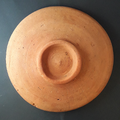VA·13: Difference between revisions
No edit summary |
|||
| Line 1: | Line 1: | ||
{{inscription | {{inscription | ||
|reading=polios | |reading=polios | ||
|reading_lepontic={{c|P||d}}{{c|O|O5|d}}{{c|L||d}}{{c|I||d}}{{c|O| | |reading_lepontic={{c|P||d}}{{c|O|O5|d}}{{c|L||d}}{{c|I||d}}{{c|O|O8|d}}{{c|S||d}} | ||
|direction=dextroverse | |direction=dextroverse | ||
|letter_height_min= | |letter_height_min=1.9 cm | ||
|letter_height_max=5 cm | |||
|letter_number_min=6 | |letter_number_min=6 | ||
|word_number=1 | |word_number=1 | ||
| Line 20: | Line 21: | ||
|morandi=113 | |morandi=113 | ||
|source_detail=Morandi 2004: 599 f. no. 113 | |source_detail=Morandi 2004: 599 f. no. 113 | ||
|checklevel= | |checklevel=1 | ||
|problem=O-Variante gehört weg | |||
}} | }} | ||
==Commentary== | ==Commentary== | ||
First published in {{bib|Morandi 2004}}: 599 f., no. 113. | First published in {{bib|Morandi 2004}}: 599 f., no. 113. Examined for LexLep on 30<sup>th</sup> April 2022. | ||
Images in {{bib|Morandi 2001}}: 12, no. 4 (drawing), {{bib|Morandi 2004}}: 603, fig. 16.113 (drawing) and tav. XVI.113 (photo). | Images in {{bib|Morandi 2001}}: 12, no. 4 (drawing), {{bib|Morandi 2004}}: 603, fig. 16.113 (drawing) and tav. XVI.113 (photo). | ||
Inscribed upside-down on the bottom of the bowl. Pi and iota are considerably taller than the other letters; the lines of the first omicron are also prolonged at the bottom | Inscribed upside-down on the bottom of the bowl (length ca. 8 cm). Pi and iota are considerably taller than the other letters; the lines of the first omicron are also prolonged at the bottom, as is the bottom bar of sigma (taken for two bars {{c||S2|d}} by Morandi because of the slight curve). | ||
''polios'' is a masculine personal name which finds comparanda in Celtic context, but not necessarily of Celtic origin (see the word page); Morandi 2004 alternatively compares Greek ''πολιός'' 'grey'. Cf. ''publius polio'' on a 2<sup>nd</sup> c. Roman stela from nearby [[Sesto Calende]] ({{bib|Sartori 2009b}}: 464 f., SC14.03). | ''polios'' is a masculine personal name which finds comparanda in Celtic context, but not necessarily of Celtic origin (see the word page); Morandi 2004 alternatively compares Greek ''πολιός'' 'grey'. Cf. ''publius polio'' on a 2<sup>nd</sup> c. Roman stela from nearby [[Sesto Calende]] ({{bib|Sartori 2009b}}: 464 f., SC14.03). | ||
Latest revision as of 21:23, 15 December 2022
| Inscription | |
|---|---|
| Reading in transliteration: | polios |
| Reading in original script: | |
|
| |
| Object: | VA·13 Arsago Seprio (bowl) |
| Position: | bottom, outside |
| Orientation: | 180° |
| Direction of writing: | dextroverse |
| Script: | North Italic script |
| Letter height: | 1.9–5 cm0.748 in <br />1.969 in <br /> |
| Number of letters: | 6 |
| Number of words: | 1 |
| Number of lines: | 1 |
| Workmanship: | scratched |
| Condition: | complete |
|
| |
| Archaeological culture: | Augustan [from object] |
| Date of inscription: | late 1st c. BC [from object] |
|
| |
| Type: | unknown |
| Language: | perhaps Celtic |
| Meaning: | 'Polios' |
|
| |
| Alternative sigla: | Morandi 2004: 113 |
|
| |
| Sources: | Morandi 2004: 599 f. no. 113 |
Images
Commentary
First published in Morandi 2004: 599 f., no. 113. Examined for LexLep on 30th April 2022.
Images in Morandi 2001: 12, no. 4 (drawing), Morandi 2004: 603, fig. 16.113 (drawing) and tav. XVI.113 (photo).
Inscribed upside-down on the bottom of the bowl (length ca. 8 cm). Pi and iota are considerably taller than the other letters; the lines of the first omicron are also prolonged at the bottom, as is the bottom bar of sigma (taken for two bars ![]() by Morandi because of the slight curve).
by Morandi because of the slight curve).
polios is a masculine personal name which finds comparanda in Celtic context, but not necessarily of Celtic origin (see the word page); Morandi 2004 alternatively compares Greek πολιός 'grey'. Cf. publius polio on a 2nd c. Roman stela from nearby Sesto Calende (Sartori 2009b: 464 f., SC14.03).
From the same grave comes a terra sigillata cup (Goudineau 2) with a stamp attributable to C. Sertorius Ocella (OCK 1912, 40–15 BC), from the associated ustrinum fragments of two more terra sigillata vessels with stamps of Macer (OCK 1078) and Saluius (OCK 1775/1776/1777) (Volontè Fredini 1990: 70).



